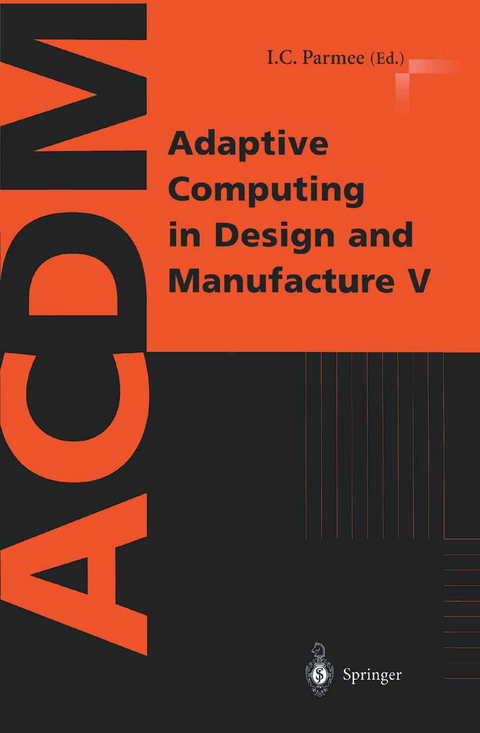
Adaptive Computing in Design and Manufacture V
Springer London Ltd (Verlag)
978-1-85233-605-9 (ISBN)
1.1 Pareto Solutions of Multipoint Design of Supersonic Wings Using Evolutionary Algorithms.- 1.2 Notes on Design Through Artificial Evolution: Opportunities and Algorithms.- 1.3 Testing, Evaluation and Performance of Optimization and Learning Systems.- 1.4 From Evolutionary Computation to Natural Computation.- 2.1 Experiences with Hybrid Evolutionary/Local Optimization for Process Design.- 2.2 The Development of a Grid-based Engineering Design Problem Solving Environment.- 2.3 A Hybrid Search Technique for Inverse Transient Analysis in Water Distribution Systems.- 2.4 Optimisation of Thermal Power Plant Designs: A Graph-based Adaptive Search Approach.- 2.5 Genetic Algorithm Search for Stent Design Improvements.- 2.6 A Multi-objective Optimisation Approach for the Conceptual Design of Frame Structures.- 2.7 Multi-Objective Evolutionary Topological Optimum Design.- 2.8 Better Surface Intersections by Constrained Evolution.- 2.9 Inverse Identification of Boundary Constants for Electronic Packages Using Modified Micro Genetic Algorithm and the Reduced-basis Method.- 2.10 Extrinsic Evolution of Finite State Machines.- 3.1 Neural Computing Approach to Shape Change Estimation in Hot Isostatic Pressing.- 3.2 Multi-criterion Tackling Bottleneck Machines and Exceptional Parts in Cell Formation Using Genetic Algorithms.- 3.3 A New Approach to Packing Non-Convex Polygons Using the No Fit Polygon and Meta-Heuristic and Evolutionary Algorithms.- 4.1 Evolutionary Multi-criteria Optimization for Improved Design of Optimal Control Systems.- 4.2 Explorations in Fuzzy Classifier System Architectures.- 4.3 Evolving Temporal Rules with the Delayed Action Classifier System — Analysis and New Results.- 4.4 Adaptive Image Segmentation Based on Visual Interactive Feedback Learning.- 5.1Adapting Problem Specifications and Design Solutions Using Co-evolution.- 5.2 Handling Constraints in Genetic Algorithms Using Dominance- based Tournaments.- 5.3 The Optimisation of Multivariate Robust Design Criteria.- 5.4 Learning from Experience: Case Injected Genetic Algorithm Design of Combinational Logic Circuits.- 5.5 Constrained Optimisation with the Fuzzy Clustering Evolution Strategy.- 5.6 Constrained Optimization Using an Evolutionary Programming- based Cultural Algorithm.- 5.7 A Data Mining Tool Using an Intelligent Processing System with a Clustering Application.- 6.1 Full Elite Sets for Multi-objective Optimisation.- 6.2 Agent-based Support within an Interactive Evolutionary Design System.- 6.3 A Multi-Agent Architecture for Business Process Management Adapts to Unreliable Performance.- 6.4 Real-time Co-ordinated Scheduling Using a Genetic Algorithm.- Author Index.
| Erscheint lt. Verlag | 18.4.2002 |
|---|---|
| Zusatzinfo | 103 Illustrations, black and white; XI, 393 p. 103 illus. |
| Verlagsort | England |
| Sprache | englisch |
| Maße | 155 x 235 mm |
| Themenwelt | Mathematik / Informatik ► Informatik ► Theorie / Studium |
| Informatik ► Weitere Themen ► CAD-Programme | |
| Technik ► Maschinenbau | |
| Schlagworte | Design • evolutionary computation • Manufacture |
| ISBN-10 | 1-85233-605-6 / 1852336056 |
| ISBN-13 | 978-1-85233-605-9 / 9781852336059 |
| Zustand | Neuware |
| Haben Sie eine Frage zum Produkt? |
aus dem Bereich


